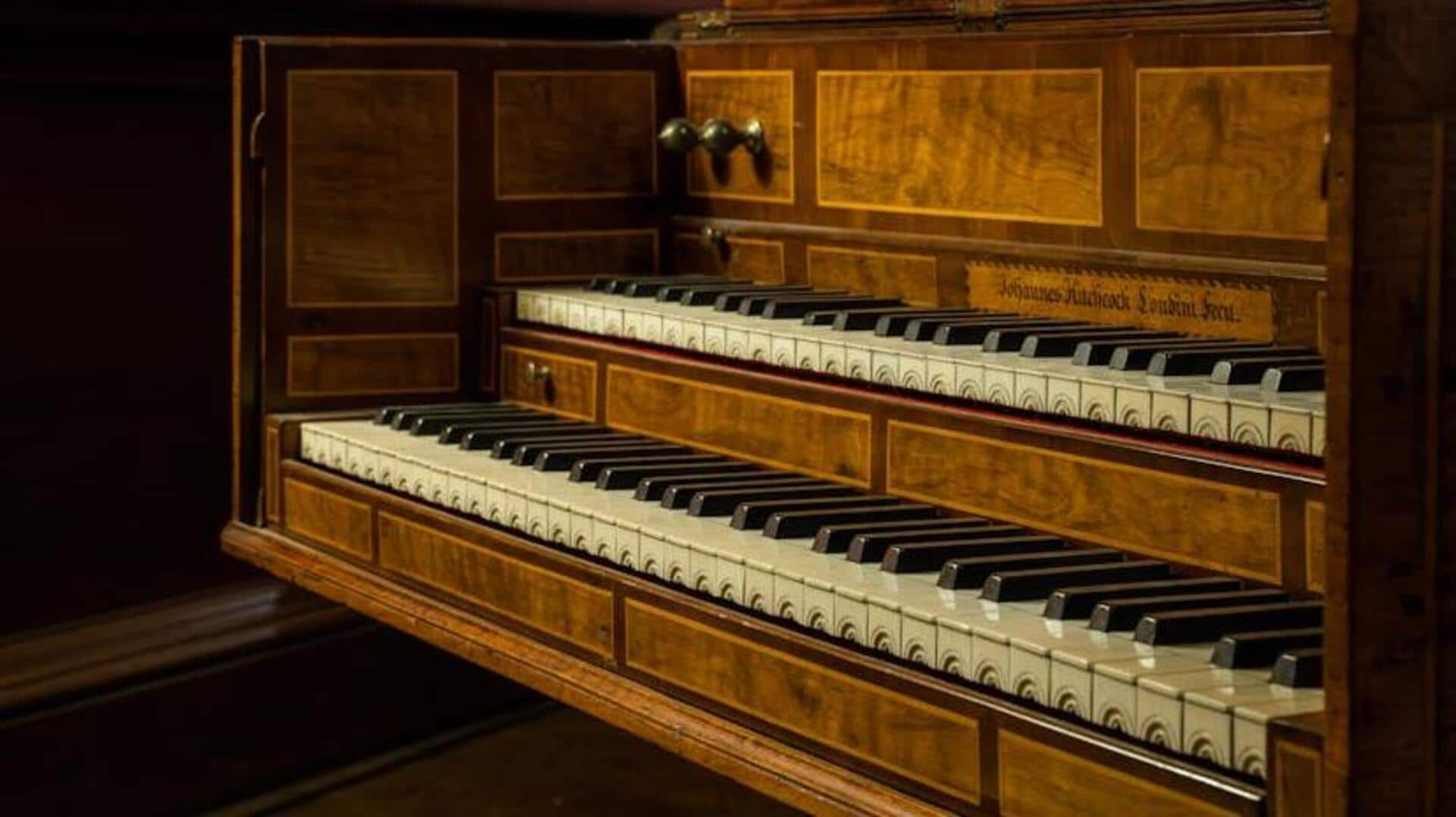
Making music on a harpsichord: The easy way
What's the story
The harpsichord, with its unique tonal character, is the beating heart of baroque music and beyond.
This article demystifies the art of making music with this historical instrument.
We are keeping it super simple, focusing on practical advice for hobbyists and beginners.
From grasping its inner workings to experimenting with composition techniques, we strive to offer a complete guide.
And, we promise, no complicated jargon!
Mechanics
Understanding the harpsichord's mechanics
The harpsichord generates sound by plucking strings when keys are depressed, in contrast to the piano which strikes them.
This mechanism creates a distinctive timbre that is simultaneously bright and resonant.
For those unfamiliar with the instrument, understanding its action can profoundly impact compositional decisions and performance approaches.
Experimenting with registrations to discover their effects on sound can lead to innovative arrangements that fully harness the harpsichord's potential.
Baroque
Exploring Baroque techniques
Baroque music is dominated by the harpsichord, and it's crucial for any sound designer to understand the compositions of that period.
Studying and analyzing pieces by composers like Bach or Scarlatti will provide a wealth of knowledge about effective harpsichord writing and the use of ornamentation.
Imitating these techniques at first will help establish a strong foundation before branching out into more modern styles or your own compositions.
Composition
Composition tips for beginners
When writing for the harpsichord, you can't ignore its inability to change dynamics.
Emphasize texture and articulation to convey emotion or emphasis, leaving dynamics out of the equation.
Counterpoint is your best friend. The harpsichord shines with interweaving voices thanks to its clear tone separation.
If you're a beginner, start with simple two-part inventions to practice this skill.
Modernity
Incorporating modern elements
Despite its historical origins, the harpsichord can be a surprisingly versatile and expressive instrument in contemporary styles like jazz or even electronic music.
By exploring non-traditional scales, rhythms, and harmonies, you can create exciting new sounds that push the boundaries of what's typically associated with the instrument.
Working with musicians from diverse backgrounds can also bring new perspectives and unique approaches to your compositions.
Maintenance
Maintenance tips for harpsichords
A well-cared-for harpsichord is a joy to play and hear.
Its sensitivity to humidity means regular tuning is crucial, but hiring a pro can add up ($50-$100 a pop).
Mastering basic tuning not only saves cash but also fosters a closer bond with your instrument.
Keeping keys clean with a gentle touch and steering clear of extreme temps will also keep those mechanics humming along.